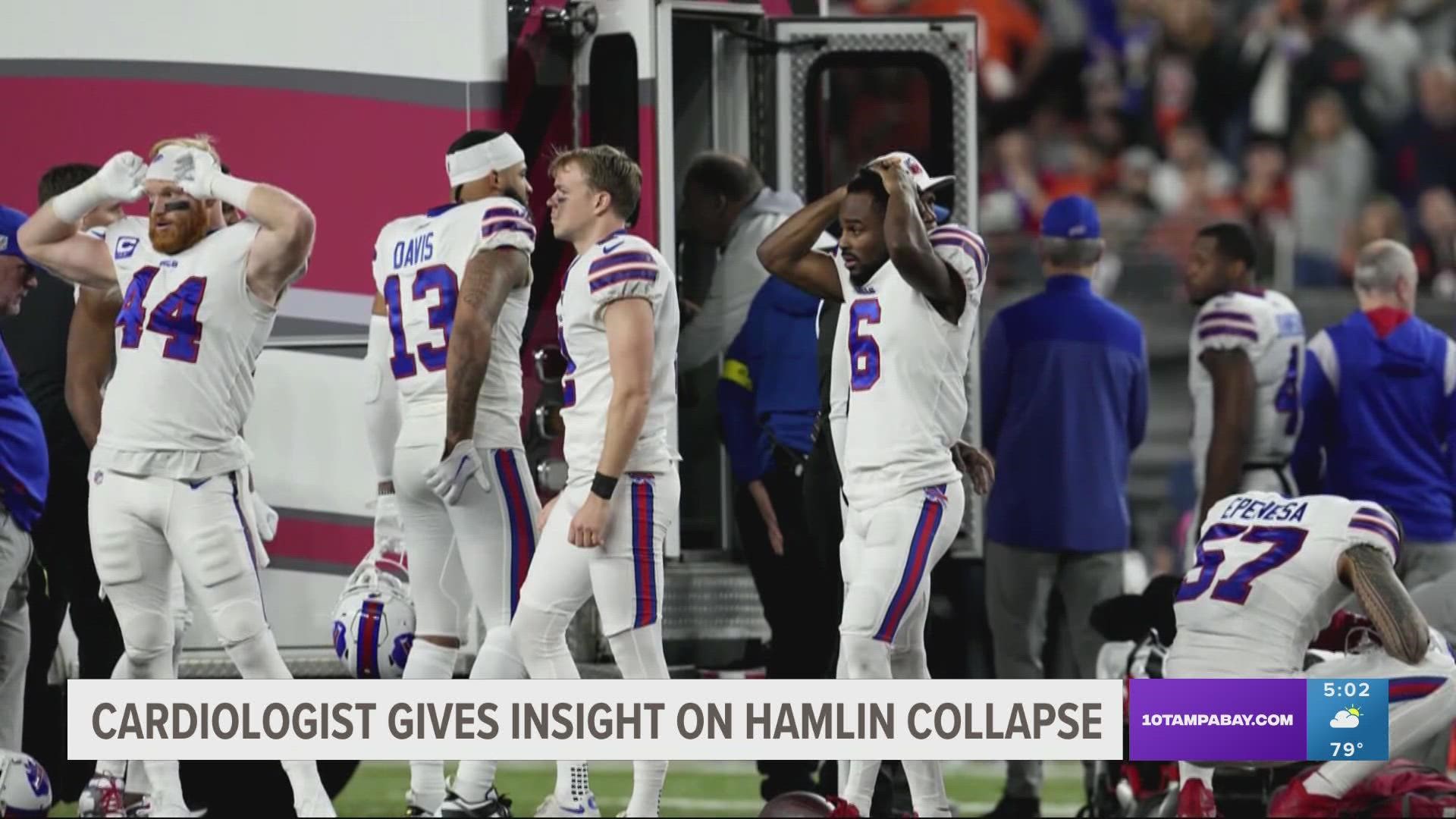ST. PETERSBURG, Fla. — The more we watched, the more we began to understand the severity of what was happening on the football field Monday night during the game between the Buffalo Bills and Cincinnati Bengals.
Bills safety Damar Hamlin was not down on the field injured. He was down on the field fighting for his life.
Dr. Peter Wassmer of Bayfront Health in St. Petersburg was watching the football game live Monday night. Initially, when he saw the play, he didn't think much of it but once he saw the replay of the hit and Hamlin's collapse a few seconds later, he immediately knew what could have happened.
"He may have had this thing called commotio cordis from blunt trauma to the chest," Wassmer said.
Commotio cordis is a type of cardiac arrest that causes the heart to quiver.
"The only way of getting back the heart rhythm is giving another electrical shock or defibrillation to get it back in rhythm. The sooner you do that, the better," Wassmer said, who also described the condition as rare but not uncommon.
Usually, cardiologists see commotio cordis in adolescent males who don't have a fully developed chest wall.
"If you have enough force or velocity in the right spot in your chest in the right moment when your heart is in that particular segment of the cardiac cycle, then it can go into this ventricular fibrillation or arrest," Wassmer said.
Over just the last few years, at least three young football players in the Tampa Bay region died after a cardiac event. Often it's due to an underlying issue. However, Wassmer said he doesn't think that was Hamlin's circumstances.
"In this case, it looks more likely that he probably had a structurally normal heart and a freak accident of wrong place and wrong time," he said.
The odds of survival depend on how long it takes to get the heartbeat back to normal and according to Wassmer, for every minute you lose, your percentage of survival decreases by 10 percent.

